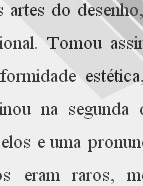

................................
It was in this context, so propitious to dilettantism and national rhetoric, that Joaquim de Vasconcelos (Porto, 1849 - Porto, 1936) emerged, unanimously considered the first great Portuguese art historian. Reynaldo dos Santos described him, in 1922, as "the illustrious master and true initiator of the studies of art history criticism in Portugal" (A Torre de Belém Coimbra, 1922, p. 10), and, in 1929, as a true landmark marking two eras: "Art historiography in Portugal can be divided into two periods - one before Mr. Joaquim de Vasconcelos, and another, initiated by him". ("Joaquim de Vasconcelos", Ilustração Moderna [Modern Illustration], Porto, February 1929, p. 282). His training in Germany endowed him with a methodological and critical competence far superior to that of our country. And it fostered in him an intransigence towards mediocrity and the most superficial forms of artistic patriotism.
"We were born in Portugal," he wrote in 1873; "our physical existence holds us here, but it is fragile and can only last the regular existence of a lifetime; intellectual and moral existence we owe to Germany" (O Consumado Germanista [The Ultimate Germanist] Porto, p. 1). The son of a merchant, orphaned at the age of four, he had been sent to Hamburg in 1859. He returned six years later to prepare for university, but eventually abandoned this plan. He then experienced a "withdrawal from studies" and a "profound disgust" for society. These are his own words. He responded to both with constant labour, which resulted in a large body of work on architecture, sculpture, painting, ceramics, industrial arts, goldsmithery, music, and art education. He saw "not only the monuments of Portugal from north to south, but also the country’s sculpture, goldsmithery, painting, furniture, faience, clothing, embroidery, in other words all aspects of decorative forms and traditions, along with a culture of general art history, a mastery of bibliography and knowledge of foreign works, essential to the study of the affinities and origins of national art" (Reynaldo dos Santos, cited article).
This was a man who had made his professional life as a high school teacher (from 1883 until he retired in 1919), and who, for a very brief period, and when he was already over the age of sixty, taught History of Art at the Escola das Belas-Artes do Porto [School of Fine Arts in Porto] (1913-1917) and archaeology at the Universidade de Coimbra (1915-1918);
